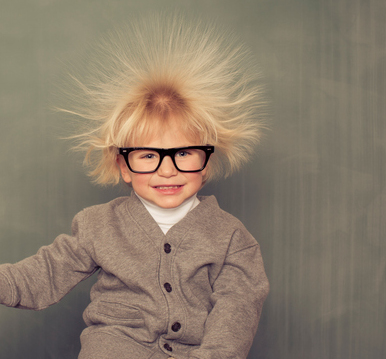

By The Cosmetic Chemist Staff
December 15, 2017

A rare genetic disease, uncombable hair syndrome, also known as pili trianguli et canaliculi, mostly affects young children and results in an overall condition in which hair is extremely unruly and unmanageable, and appears to be standing on end.1 It is frizzy and dry and was originally described as “spun glass hair” due to its physical appearance.2 The actual shape of the hair shaft is altered in this condition, and instead of the fiber cross-section being circular or eliptical in nature, it adopts a triangular shape.3 To confound matters more, on a given head of hair some hair shafts adopt this structure while others do not.
The shape of the dermal papilla is thought to be one of the root causes of this phenomenon in hair.1 In addition, the morphological structure of some of the components of the hair follicle (e.g., inner root sheath) are altered.4 Surprisingly, the amino acid composition of uncombable hair is no different than normal hair. However, the level of sulfur containing proteins in in the cuticle of uncombable hair is greater than hair not afflicted by this condition.5
In most cases, uncombable hair syndrome subsides when children reach adolescence. Attempts to alleviate this ailment have focused on oral administration with the B-vitamin, biotin, which is commonly used as a supplement to strengthen keratin tissues, such as nail or hair.6 It is recommended that patients afflicted by uncombable hair syndrome avoid mechanically or chemically stressing the hair either by grooming (e.g., brushing) or cosmetic treatments (e.g., bleaching, dyeing, etc.).
References
1. P. Calderon, N. Otberg, and J. Shapiro, Uncombable hair syndrome, J. Am. Acad. Dermatol., 61, 512-515 (2009).
2. J.D. Stroud and A.H. Mehregan, Spun glass hair: A clinicopathologic study of an unusual hair defect. In: The First Human Hair Symposium, Ed. A.C. Brown, Medcom Press: New York, 1973.
3. C.A. Kuhn, T.N. Helm, W.F. Bergfeld, and J.T. McMahon, Acquired uncomable hair, Arch. Dermatol., 129, 1061-1062 (1993).
4. J.L. Stone, G.T. Reizner, S.A. Muller, and D.J. Elpern, Hair bulb anomaly in a Japanese girl with uncombable hair, J. Am. Acad. Dermatol., 17, 841-843 (1987).
5. D.A. Whiting, Hair shaft defects. In: Disorders of Hair Growth: Diagnosis and Treatment, Ed. E.A. Olsen, McGraw- Hill: Barcelona, 2003.
6. W.B. Shelley and E.D. Shelley, Uncombable hair syndrome: observations on response to biotin and occurrence in siblings with ectodermal dysplasia, J. Am. Acad. Dermatol., 13, 97-102, (1985).